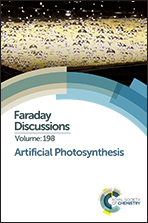The challenges of solar hydrogen in chemical industry: how to provide, and how to apply?
Abstract
Curbing anthropogenic CO2 emissions is one of the most important issues in the 21st century in order to mitigate climate change. Although the installation of solar cells for energy supply is in progress and these are becoming popular as an efficient use of sunlight, they are mostly used by energy-related industrial sectors. In the common chemical industry, various fossil resources are used to emit a huge amount of CO2. We believe that the chemical industry can make an effort to curb CO2 emissions by changing its resources to more environmentally benign ones. Solar hydrogen (hydrogen obtained by catalytic water splitting under sunlight) is an ideal sustainable resource and can be utilized as a chemical resource via combination with CO2. The 10 year program named “Artificial Photo Synthetic Chemical Process (ARPChem)” has been in progress under the support of the New Energy and Industrial Technology Development Organization (NEDO) in Japan since 2012. We introduce the strategy of ARPChem and the progress of the investigations including water splitting, hydrogen/oxygen separation, and olefin synthesis from solar hydrogen and CO2. We also argue that a realistic strategy to actualize “ARPChem” technologies in the society would be their combination with better fossil resources such as lower alkanes from a Life Cycle Assessment (LCA) point of view.
- This article is part of the themed collection: Artificial Photosynthesis

 Please wait while we load your content...
Please wait while we load your content...